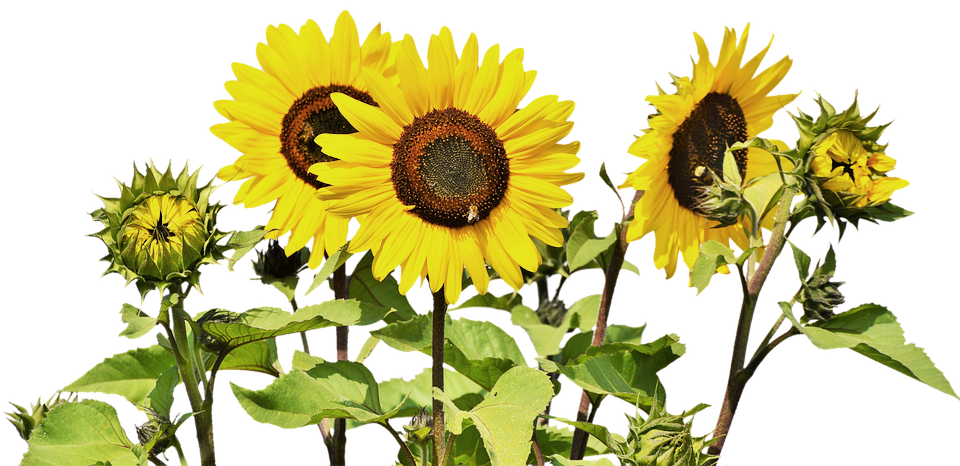
The Top 5 Questions in Container Gardening
By Chris Edmunds
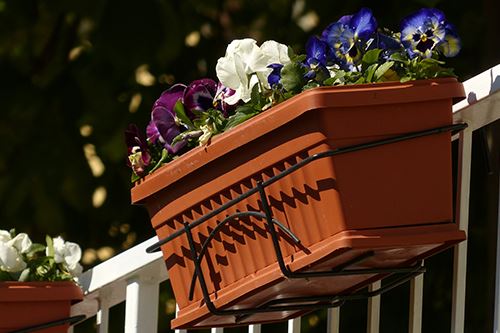
Container gardening can be as complicated or as easy as you make it, and your imagination is the limit for what you can do with your outside space. To make maintaining your container garden easier, we have all the answers you need to your burning questions. Here are some tips, answers, and pointers to get you and your plants growing in the right direction:
How Much Sun Will My Plants Need?
This might be the most common question of all, and one of the most important considerations for getting the best performance. Plants need a certain amount of sunlight or shade depending on their needs. Seeing as your plants can’t move themselves to be more comfortable, it’s important to think about exposure when you choose your plants.
You’ll have the best success if you choose plants that are suited for where you put them. Unfortunately, some tags can be misleading, as they tend to generalize for the whole country. We customize all of our tags, except varieties controlled by the breeder, so the exposure information is correct on tags that have our logo. To help simplify things, at our garden centers, we try to group our shade plants together under or near the shade structure, and our sun-loving plants are out in the wide open. This way you can see what belongs in shade and what belongs in sun just by looking at where they are located in our garden center.
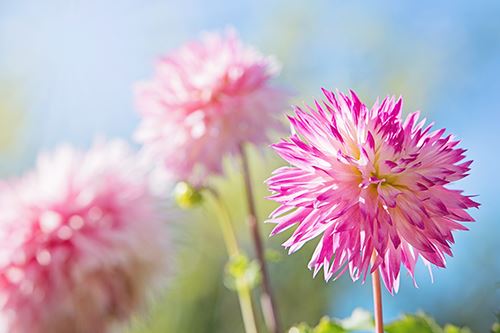 Sadly, some plants just might not be the best fit for the spot you have in mind, which can be tough when you fall in love with something. To save yourself the heartache, plan ahead before selecting your plants. By doing so, you’ll not only know where you can put them, but you’ll also know what they pair best with in a container, based on how much sun or shade they need. One of the best planning tools is our website, kawvalleygreenhouse.com. In the “Plant Finder” box on our home page is a link for “Super Duper Plant Search”. Not only can you see what plants are good for sun or shade, you can check other criteria, such as “Rabbit Resistant”, “Attracts Hummingbirds” and even what bloom color or height you want.
Sadly, some plants just might not be the best fit for the spot you have in mind, which can be tough when you fall in love with something. To save yourself the heartache, plan ahead before selecting your plants. By doing so, you’ll not only know where you can put them, but you’ll also know what they pair best with in a container, based on how much sun or shade they need. One of the best planning tools is our website, kawvalleygreenhouse.com. In the “Plant Finder” box on our home page is a link for “Super Duper Plant Search”. Not only can you see what plants are good for sun or shade, you can check other criteria, such as “Rabbit Resistant”, “Attracts Hummingbirds” and even what bloom color or height you want.
If you’re unsure of what type of exposure you have, you’ll want to take a day to observe the spot where your container will be placed. Watch what time of day it’s getting direct sunlight and for how long. You’ll also want to have a good understanding of what the exposure terms mean, so you can compare your site to the following exposures:
Full Sun plants need at least 6 hours of sunlight between 11 am and 6 pm to perform their best. Without this, these plants will get leggy, pale and not bloom well at all. Full Sun plants are a great choice for unobstructed south-facing areas where they get lots of sunshine, or places out in the wide open, away from any walls, fences or trees that cast shade.
Part Sun plants need at least 3-4 hours of afternoon sun, but it doesn’t have to be all afternoon. We carry few, if any, plants that are only labelled for part sun, but we have a lot of plants labelled for “Full to Part Sun”. Full to Part Sun plants perform best in full sun, but will still perform if shade hits them for a couple hours between 11 am and 6 pm.
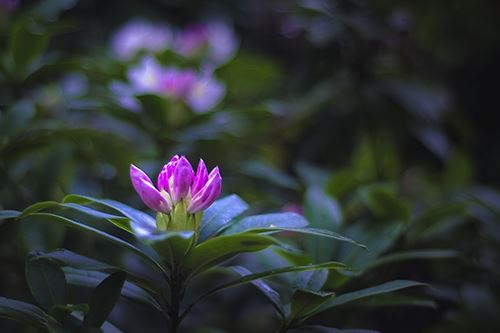
Full Shade plants have a low tolerance for direct sunlight. They still need light to grow but are very sensitive to light levels. Keep these plants in areas that don’t get any direct sunlight between 10 am and 6 pm. North-facing walls provide enough shade to be considered “Full Shade” as long as your container is close to the wall.
Part Shade plants enjoy some sun rays but might get a sunburn if they’re left under the most intense rays of the afternoon sun for too long. As a general rule, morning and evening sun (after 6 pm) is fine for part shade plants. Part Shade plants just can’t tolerate much afternoon sun, maybe an hour between noon and 6 pm. Again, we carry few, if any, plants that are labelled for part shade only, but we have many varieties labelled “Full to Part Shade”. Full to Part Shade plants generally perform best in full shade, but will still perform if they get direct sunlight before noon or after 6 pm and maybe some dappled sunlight for no more than an hour between those times.
How Can I Tell What My Plants Will Look Like Together?
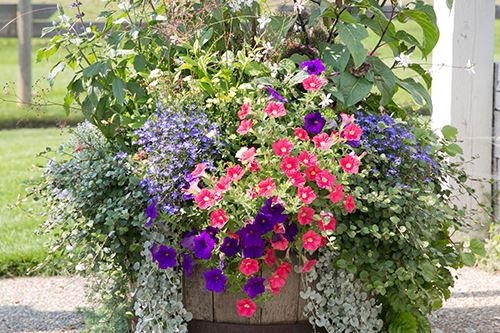 The tag on your new plants will tell you how high and wide they will get. This varies a little with their growing conditions, but you can usually be confident that your new additions won’t stay so little once planted and cared for. When you’re planting, you’ll want to leave space to accommodate the full-grown plant, and you’ll also want to keep in mind how much each plant is going to grow. You want your container design to stay in balance through the season without having to rescue those slow-growing plants from any aggressive neighbors.
The tag on your new plants will tell you how high and wide they will get. This varies a little with their growing conditions, but you can usually be confident that your new additions won’t stay so little once planted and cared for. When you’re planting, you’ll want to leave space to accommodate the full-grown plant, and you’ll also want to keep in mind how much each plant is going to grow. You want your container design to stay in balance through the season without having to rescue those slow-growing plants from any aggressive neighbors.
Shape can also be important when you’re building a container. Again, to simplify things at our Kansas garden centers (as best we can), we try to group our plants into “thriller”, “filler”, and “spiller” categories. You might want a more vertical-growing plant (“thriller) to be the centerpiece, with shorter plants around your centerpiece to provide “filler”, and trailing plants (“spiller”) to spill over the sides.
Your container gardens are going to see a lot of growth in a season. It’s important to help your plants dream big by imagining how they’ll expand and thrive past their tiny and compact look in the store!
How Much Water Do My Plants Need?
Water is the main fuel for your plants, so it’s clearly important and one of the biggest factors in your plants’ health and growth. Roots can be damaged from being over-watered as well as under-watered.
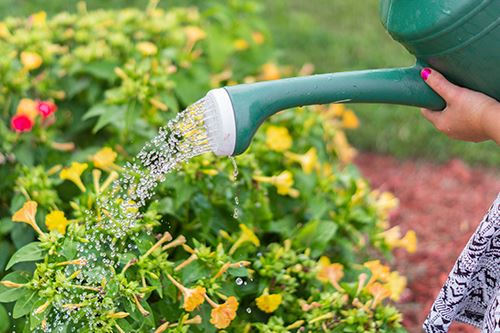 One good way to test how moist the soil is, and therefore if you need to water, is to feel it. Poke a finger into the top part of the soil to see how deep you have to go before it feels moist. If you’re not sure, pick up the container and test its weight. The heavier it is the wetter, so get to know the weight of your container when you know it is wet vs. how light it is when it is dry.
One good way to test how moist the soil is, and therefore if you need to water, is to feel it. Poke a finger into the top part of the soil to see how deep you have to go before it feels moist. If you’re not sure, pick up the container and test its weight. The heavier it is the wetter, so get to know the weight of your container when you know it is wet vs. how light it is when it is dry.
Almost all plants die if they are kept too wet, so it’s important to wait until the top inch or so of soil is dry before watering. If you see wilt and feel no moisture in the soil, water immediately. If your plants perk up in an hour or so, they probably survived getting too dry. If they stay wilted, they may not come out of it.
Be aware that plants can look wilted even if the soil is wet. This is a sign of root rot, which is caused by the soil staying too wet. It’s very hard to revive a plant once it shows wilt for this reason. This is why feeling the soil is important before you water.
Having a container with good drainage will also help prevent the roots from staying too wet. Be sure to choose containers that have drainage holes so that excess water can flow out. If you have a saucer under your container, the excess water should be gone before you water again. A pot that sits in a saucer of water that never dries out means the soil is not getting a chance to dry out, because as long as there is water available, the pot will wick that water up into the soil.
Good quality potting soil will also help provide good drainage and prevent root rot. Generally, a lighter weight potting soil has more organic material than a heavy one and will allow better drainage. We formulated our own brand, KVG GOOD STUFF potting soil, and highly recommend it.
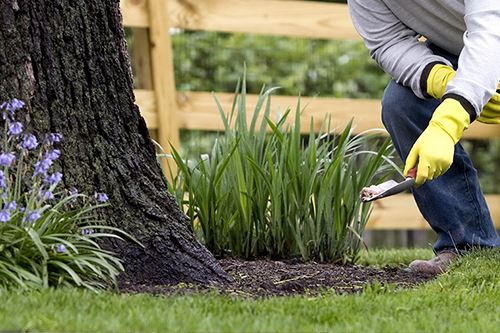 How Much Fertilizer Do My Plants Need?
How Much Fertilizer Do My Plants Need?
Fertilizers are important but finding the right product can be an intimidating and confusing journey through buzzwords and numbers that don’t make a lot of sense. It’s actually simple when you get to the root of it, though.
Many of our favorite annuals have been designed for high-performance and will need extra nutrients to keep them going. Like race cars that need high-octane fuel to perform their best, these annuals need some help to keep going until the end of the season without getting exhausted. These annuals are “high feeders” and are your first concern when it comes to fertilizing.
Other plants, like shrubs, perennials, and houseplants, don’t need the same level of help and can get most of what they need from the soil. Also, plants in the shade generally need less fertilizer than those in the sun. In fact, fertilizing when you don’t need to could end up hurting your plants more as the salts build up on the roots, burning them.
There are 2 main types of fertilizers: Water soluble and slow release.
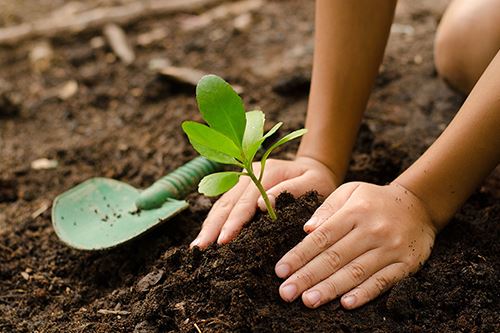 Water soluble fertilizers are intended to be dissolved in water before use. They are perfect for a pick-me-up every two weeks or so. Slow release (or controlled release) fertilizers are a great way to provide a constant baseline of nutrition, but need to be mixed into the soil before planting. For high performance annuals in the sun, especially petunias and verbenas, we highly recommend incorporating slow-release fertilizer into the soil, and start feeding with water soluble fertilizer sometime in August, once the slow-release has been used up.
Water soluble fertilizers are intended to be dissolved in water before use. They are perfect for a pick-me-up every two weeks or so. Slow release (or controlled release) fertilizers are a great way to provide a constant baseline of nutrition, but need to be mixed into the soil before planting. For high performance annuals in the sun, especially petunias and verbenas, we highly recommend incorporating slow-release fertilizer into the soil, and start feeding with water soluble fertilizer sometime in August, once the slow-release has been used up.
Fertilizers consist of Nitrogen (N), Phosphorous (P), and Potassium (K). Each of these elements is responsible for different jobs nurturing the plant. Nitrogen promotes healthy growth of leaves and foliage. Phosphorus stimulates the roots. Potassium is like a multivitamin that supports the rest of the plant growth. Different plants might need different mixtures, but it’s almost always a safe bet to start with a simple 20(N)-20(P)-20(K) mix. We have formulated our own brand, “KVG Good Stuff” fertilizer, in both slow release and water soluble, to provide the perfect formulation for your annuals to perform their best.
Are My Plants Compatible?
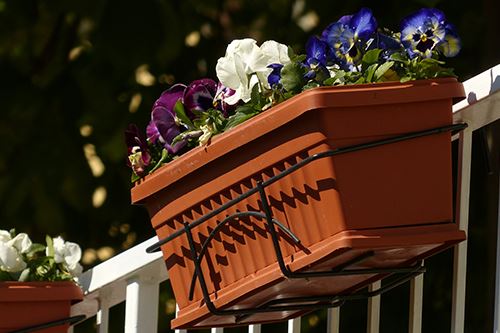 In the cramped quarters of a container garden, matching compatible plants together is important to ensure that all of them grow together without too much fighting. Pairing plants with similar growth patterns will have them keep pace with each other, while a quick and aggressive grower can easily swallow up a meeker plant beside it. We often forget that our dainty and pretty plants are actually always in a battle to survive and grow their best, competing with their neighbors for nutrients and sunlight.
In the cramped quarters of a container garden, matching compatible plants together is important to ensure that all of them grow together without too much fighting. Pairing plants with similar growth patterns will have them keep pace with each other, while a quick and aggressive grower can easily swallow up a meeker plant beside it. We often forget that our dainty and pretty plants are actually always in a battle to survive and grow their best, competing with their neighbors for nutrients and sunlight.
To keep your container garden in the balance that you designed it for in the first place, you’ll want to match your plants by planning for their future growth - and maybe keep the scissors handy to rescue “late bloomers” that take a slower approach to growing.
More aggressive plants are a poor match with the slowest growers, but you can often get away with pairing moderate plants with either extreme if you’re willing to keep an eye out for opportunities to trim the more vigorous growers. For the easiest garden care with more guaranteed results, keep your plants matched well with plants that can keep pace with.
Keeping these rules and guidelines in place gives you all the information you need to get creative with your solutions! Container gardening is made easy when you plan ahead to give your plants a good foundation and all the things they need to stay vibrant and healthy. If you have any questions about how to pull off a spectacular container garden, visit us at one of our many locations, like our garden center in Derby. Our experts will be happy to assist you!

